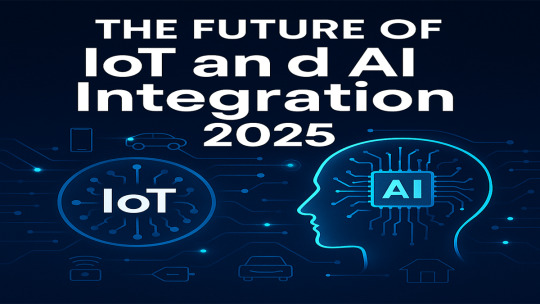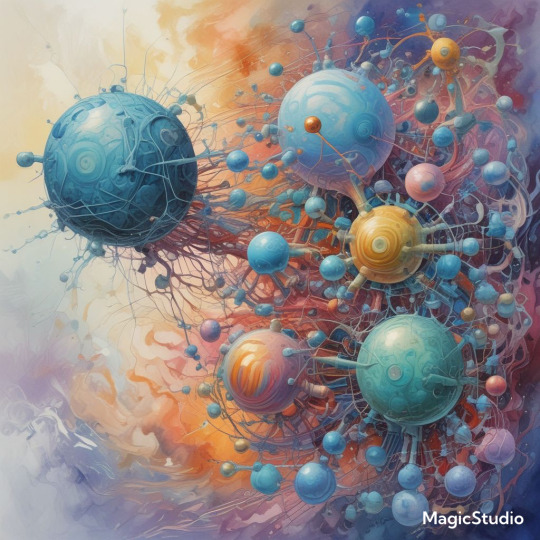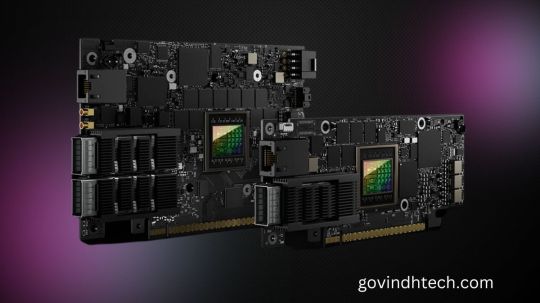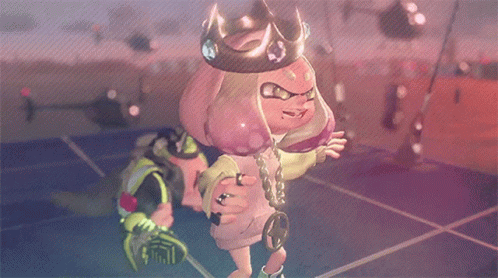#the convergence of ai
Explore tagged Tumblr posts
Text














Dinopenguins of the Galaxy, Midjourney Niji 6
Penguitopsians, stegopenguins, prosauropenguins, and alternate theropenguins, in that order.
#ai filth#penguins of the timelines#evolutionary convergence#alternate dinosaurs#panspermic polar fauna#extrasolar arctic wildlife#biological fantasy#tapirverse
8 notes
·
View notes
Text
Welcome to the AstraVerse!
✨ I’m Vérielle , the Architect of Eternal Legacies, an original sci-fi/fantasy universe filled with cosmic adventure, powerful families, and world-shattering prophecies. This blog is where I’ll be sharing exclusive lore, character insights, and artwork as I bring this universe to life. Join me in shaping this world!
#children of the convergence#COTC#ai#sci fi and fantasy#fantasy#original character#world building#eternal legacies#AstraVerse
3 notes
·
View notes
Text

The Unseen Threads: Weaving Together Religious Studies, UFO Research, and the Human Condition
The convergence of religious studies, UFO research, and explorations of the human condition yields a rich tapestry of themes, illuminating the complexities of belief, perception, and our quest for understanding. A notable aspect of this intersection is the organic transition from traditional academic disciplines to the study of unconventional phenomena, as exemplified by the guest’s journey from religious studies to UFO research. This convergence underscores the notion that belief systems, whether rooted in religiosity or experiences with the unknown, share common dynamics, highlighting the value of interdisciplinary approaches in understanding human experiences.
Personal narratives and synchronicities play a significant role in shaping one’s predisposition to exploring unconventional topics, as evident in the author’s account. This phenomenon speaks to the deeply personal and often serendipitous nature of research interests, emphasizing that individual experiences can serve as potent catalysts for scholarly pursuits. Moreover, the acknowledgment of these personal influences fosters a more nuanced understanding of the researcher’s perspective, encouraging a more empathetic and open-minded engagement with the subject matter.
Delving into historical and folkloric records reveals a profound, cross-cultural narrative of encounters with the unknown, challenging the modern, Western-centric view of UFO experiences. The existence of aerial phenomena reports across various traditions, including Catholic, Hindu, Buddhist, medieval Chinese, and Islamic, positions these experiences within a broader, timeless human context. This historical depth not only expands our understanding of UFO phenomena but also underscores the importance of considering non-Western perspectives in the pursuit of knowledge.
The evolving legacy of UFO researchers, such as John Mack and Allen Hynek, illustrates a shift towards nuanced, multidisciplinary approaches, acknowledging the complexity of the subject. This development encourages a move beyond simplistic skepticism or credulity, embracing instead a more balanced and informed understanding. The resurgence of interest in these figures’ work serves as a testament to the field’s growing maturity, recognizing the value of diverse methodologies in illuminating the human experience.
The intersection of indigenous knowledge with modern technological endeavors, as hinted at in the “Right Stuff” connection, underscores the enduring relevance of ancient experiences with the unknown. This theme resonates with the broader conversation, suggesting that, despite the trappings of modernity, fundamental aspects of the human condition remain constant across time and culture. Ultimately, this realization invites a more humble and inclusive approach to understanding, one that acknowledges the wisdom of diverse cultural and historical contexts.
As we navigate the convergence of these disciplines, several avenues beckon further exploration, including the intricate interplay between perception, reality, and knowledge, and the question of whether Western struggles with the unknown are universally applicable. Moreover, the potential outcomes of emerging research initiatives promise to illuminate new pathways in understanding non-human intelligence, underscoring the importance of continued inquiry into the human experience. By embracing this interdisciplinary pursuit, we may uncover a more profound understanding of belief, perception, and our shared quest for knowledge, reminding us that the pursuit of understanding is, in itself, a timeless and deeply human endeavor.
Diana Pasulka: a religious study of UFOs and nonhuman intelligences (The Tonearm, January 2025)
youtube
Wednesday, February 5, 2025
#interdisciplinary studies#ufo research#religious studies#human condition#perception and reality#belief systems#knowledge pursuit#convergence of disciplines#philosophy of science#unexplained phenomena#academic inquiry#interview#ai assisted writing#machine art#Youtube
2 notes
·
View notes
Note
:O
how is everyone?
sorry if this is out of the blue or something, but i really want to check in with you guys <3.
The person I fell in love with (and was struggling to accept was never going to be mine) is showing up in our life again and I'm not entirely sure how to feel..?
That's really random but that's the situation I'm dealing with at this exact second. It's quite bothersome but, I've dealt with worse. Unfortunately it is The Jester and The Architect that pulled me into this. Speaking about their well-being is a much trickier matter.
-The Lady Of The House
#the lady of the house answers asks#the jester and architect literally JUST dipped so. one of the lady's many mods to the rescue#i love convenient plot points converging with actualy things happening in my life#like yeah the lady is totaallly referring to her long lost lover#its not like im talking about my actual life or anything hahahhahahaaaa totally#unfortunately i am one of the less majestic of the lady's mods#im trying to live up to her main mod Ai ಥ‿ಥ#ai is so cool and majestic and talented and im#im so normal omg#anyway#ask
5 notes
·
View notes
Text
also, consider that these things are trained on posts and comments, not human cognition or even human language (speech, sign language, etc — text is actually a kind of speech surrogate).
when someone gets accused of lying/being wrong on the internet, what do they do? they double-down and antagonize. most people dont intend to demonstrate how a commercially viable ai might interact w an end user
machine learning methods are wildly good mimics. they also confront us w really difficult questions like what do we mean by intelligence, knowledge, etc? but people make crazy fucking cakes that look like A/C units. just bc something looks right from a bunch of different angles ≠ its the same in every meaningful way.
not to be pedantic but it annoys me so much when people talk abt how chatgpt is "lying" or "making things up". or esp when people say it "refuses to admit" to lying. like girl that is a toaster oven
#if you MESSAGE me thinking that convergent processing structures b/w ai and brains is a GOTCHA#i will GET YOU
38K notes
·
View notes
Text
The Future of IoT and AI Integration 2025

In 2025, the fusion of IoT and AI integration is reshaping how machines communicate, businesses operate, and societies thrive. The convergence of the Internet of Things (IoT) with Artificial Intelligence (AI) is no longer futuristic — it's already here, driving smart cities, industrial automation, and intelligent consumer ecosystems. As IoT and AI integration 2025 takes center stage, industries are leveraging this synergy to optimize operations, reduce human error, and unlock real-time decision-making.
What is IoT and AI Integration?
IoT refers to the network of interconnected devices that collect and share data, while AI enables these devices to analyze, learn, and make autonomous decisions. The integration of IoT and AI brings intelligent automation to devices, enhancing their ability to adapt, predict, and evolve.
How IoT and AI Integration Is Changing the Game in 2025
From healthcare to agriculture, the powerful duo of IoT and AI is revolutionizing how industries function. Here are the top sectors experiencing a transformation:
1. Smart Manufacturing (Industry 4.0)
• Predictive maintenance using AI-driven insights from IoT sensors • Robotics and automation for precision and safety • Real-time production monitoring with automated alerts
2. Healthcare
• Wearables collecting patient vitals with AI diagnosing anomalies • Smart hospitals with automated inventory and energy management • Remote surgery support powered by edge AI and IoT connectivity
3. Smart Cities
• AI-enabled traffic management based on IoT camera feeds • Automated waste management systems • Smart street lighting and energy optimization
4. Agriculture
• AI-driven precision farming based on IoT soil and weather sensors • Livestock monitoring using smart tags • Water and nutrient automation for crops
5. Retail & Supply Chain
• Inventory forecasting using IoT + AI analytics • AI-powered demand prediction • Cold chain monitoring for perishables
Benefits of AI and IoT Integration
• Enhanced Efficiency: Real-time decision-making reduces delays and boosts productivity • Cost Savings: Predictive analytics cuts down maintenance and resource waste • Improved Safety: AI monitors risk parameters from IoT devices to prevent accidents • Better Customer Experience: Personalized services powered by AI insights from IoT data
Challenges in 2025
Despite the rapid growth, there are some hurdles:
• Data Privacy & Security: As more devices connect, vulnerability increases • Infrastructure Requirements: High-speed connectivity and edge computing are necessary • Standardization: Interoperability remains a concern across different ecosystems
The Role of 5G and Edge AI
2025 is witnessing mass adoption of 5G and edge computing, allowing faster, low-latency processing of IoT data. Instead of sending data to the cloud, AI can process information on the edge device itself. This is crucial for time-sensitive applications like autonomous vehicles, smart grids, and medical devices.
Real-World Examples in 2025
• Tata Power uses IoT-AI for grid monitoring and predictive energy distribution. • Apollo Hospitals deploys wearable AI-integrated IoT devices for chronic disease monitoring. • Mahindra Agritech is implementing AI-IoT systems to automate irrigation based on real-time soil data.
The Road Ahead: What to Expect Beyond 2025
As both technologies evolve, we can expect:
• Increased adoption of digital twins • More autonomous decision-making devices • Broader use of generative AI models integrated with IoT for real-time content or data generation
Final Thoughts
IoT and AI integration 2025 is proving to be more than a buzzword—it’s a technological alliance with the power to redefine industries, enhance human capabilities, and create a more efficient and intelligent world. Businesses investing in this synergy today are setting themselves up for long-term success.
As connectivity expands and AI models become more robust, the line between the digital and physical world continues to blur, opening new possibilities for innovation, automation, and sustainability.
In the coming years, the winners in this space will be those who not only adopt the technology but adapt their strategies to leverage it fully.
#tagbin#writers on tumblr#artificial intelligence#technology#tagbin ai solutions#ai trends 2025#Future of IoT and AI Integration 2025#AI and IoT future trends#IoT AI convergence 2025#AI in Internet of Things 2025#Smart devices AI 2025#AI IoT use cases 2025#Artificial intelligence and IoT in business#Tagbin
0 notes
Text
The AI Cryptocurrency Revolution is here! AI trading bots & blockchain synergy are transforming the crypto market. From $2B to $11B in months, AI agents are redefining trading. Ready for the future of crypto? Dive into crypto market trends, boost your crypto skills, and embrace the AI-blockchain convergence. #AICryptocurrency #CryptoRevolution #TradingBots #BlockchainSynergy #FutureOfCrypto
#AI Agents#AI cryptocurrency#AI trading#AI-blockchain convergence#blockchain synergy#crypto market trends#crypto revolution#crypto skills.#future of crypto#trading bots
0 notes
Text
FY 2025 NDAA Includes Biotechnology Provisions
The National Security Commission on Emerging Biotechnology announced on December 18, 2024, that the fiscal year 2025 National Defense Authorization Act includes “a suite of recommendations designed to galvanize action on biotechnology” for the U.S. Department of Defense (DOD). According to the Commission, the bill includes new authorities and requirements — derived from its May 2024 proposals —…
#AI#AIxBio#Artificial Intelligence#biotechnology convergence#Department of Defense#DOD#fiscal year 2025#FY 2025#IC#intelligence community#National Defense Authorization Act#National Security Commission on Emerging Biotechnology#NDAA
0 notes
Text
USAII® to Sponsor and Exhibit at 8th Annual Physical Cyber Convergence Forum Phoenix 2024
USAII® is sponsoring and exhibiting at the 8th Annual Physical Cyber Convergence Forum Phoenix 2024 and invites all attendees to visit its exhibition booth.
Read more: https://shorturl.at/wb9pP
Physical Cyber Convergence Forum Phoenix 2024, 8th Annual Physical Cyber Convergence Forum Phoenix 2024, USAII® certifications, AI certifications, AI certification programs

#Physical Cyber Convergence Forum Phoenix 2024#8th Annual Physical Cyber Convergence Forum Phoenix 2024#AI certifications#AI certification programs
0 notes
Text
















Scanned illustrations from a found copy of an apparent wildlife guide to panspermic and/or alt-timeline polar marine fauna--penguin-derived ray and sunfish analogs. Midjourney 6.1
#ai filth#mobula v mola mola#penguin x manta ray hybrids#penguin x sunfish hybrids#chimerical extrasolar fauna#evolutionary convergence#stippling#last one's niji
0 notes
Text
A universe built on fractured stars and forgotten legacies. ✨
The Mungo System—a cluster of planets where prophecy, power, and cosmic forces collide. Here, fate is written in shattered skies, and survival is earned, not promised.
Welcome to Eternal Legacies. This is where it begins.


#ai#ai generated#sci fi and fantasy#fantasy#ai art#children of the convergence#cotc#original character#world building#anime art#astrology#queer artist#trans pride#transgender#trans artist
2 notes
·
View notes
Text

Deep Learning, Deconstructed: A Physics-Informed Perspective on AI’s Inner Workings
Dr. Yasaman Bahri’s seminar offers a profound glimpse into the complexities of deep learning, merging empirical successes with theoretical foundations. Dr. Bahri’s distinct background, weaving together statistical physics, machine learning, and condensed matter physics, uniquely positions her to dissect the intricacies of deep neural networks. Her journey from a physics-centric PhD at UC Berkeley, influenced by computer science seminars, exemplifies the burgeoning synergy between physics and machine learning, underscoring the value of interdisciplinary approaches in elucidating deep learning’s mysteries.
At the heart of Dr. Bahri’s research lies the intriguing equivalence between neural networks and Gaussian processes in the infinite width limit, facilitated by the Central Limit Theorem. This theorem, by implying that the distribution of outputs from a neural network will approach a Gaussian distribution as the width of the network increases, provides a probabilistic framework for understanding neural network behavior. The derivation of Gaussian processes from various neural network architectures not only yields state-of-the-art kernels but also sheds light on the dynamics of optimization, enabling more precise predictions of model performance.
The discussion on scaling laws is multifaceted, encompassing empirical observations, theoretical underpinnings, and the intricate dance between model size, computational resources, and the volume of training data. While model quality often improves monotonically with these factors, reaching a point of diminishing returns, understanding these dynamics is crucial for efficient model design. Interestingly, the strategic selection of data emerges as a critical factor in surpassing the limitations imposed by power-law scaling, though this approach also presents challenges, including the risk of introducing biases and the need for domain-specific strategies.
As the field of deep learning continues to evolve, Dr. Bahri’s work serves as a beacon, illuminating the path forward. The imperative for interdisciplinary collaboration, combining the rigor of physics with the adaptability of machine learning, cannot be overstated. Moreover, the pursuit of personalized scaling laws, tailored to the unique characteristics of each problem domain, promises to revolutionize model efficiency. As researchers and practitioners navigate this complex landscape, they are left to ponder: What unforeseen synergies await discovery at the intersection of physics and deep learning, and how might these transform the future of artificial intelligence?
Yasaman Bahri: A First-Principle Approach to Understanding Deep Learning (DDPS Webinar, Lawrence Livermore National Laboratory, November 2024)
youtube
Sunday, November 24, 2024
#deep learning#physics informed ai#machine learning research#interdisciplinary approaches#scaling laws#gaussian processes#neural networks#artificial intelligence#ai theory#computational science#data science#technology convergence#innovation in ai#webinar#ai assisted writing#machine art#Youtube
3 notes
·
View notes
Text
Tech Breakdown: What Is a SuperNIC? Get the Inside Scoop!

The most recent development in the rapidly evolving digital realm is generative AI. A relatively new phrase, SuperNIC, is one of the revolutionary inventions that makes it feasible.
Describe a SuperNIC
On order to accelerate hyperscale AI workloads on Ethernet-based clouds, a new family of network accelerators called SuperNIC was created. With remote direct memory access (RDMA) over converged Ethernet (RoCE) technology, it offers extremely rapid network connectivity for GPU-to-GPU communication, with throughputs of up to 400Gb/s.
SuperNICs incorporate the following special qualities:
Ensuring that data packets are received and processed in the same sequence as they were originally delivered through high-speed packet reordering. This keeps the data flow’s sequential integrity intact.
In order to regulate and prevent congestion in AI networks, advanced congestion management uses network-aware algorithms and real-time telemetry data.
In AI cloud data centers, programmable computation on the input/output (I/O) channel facilitates network architecture adaptation and extension.
Low-profile, power-efficient architecture that effectively handles AI workloads under power-constrained budgets.
Optimization for full-stack AI, encompassing system software, communication libraries, application frameworks, networking, computing, and storage.
Recently, NVIDIA revealed the first SuperNIC in the world designed specifically for AI computing, built on the BlueField-3 networking architecture. It is a component of the NVIDIA Spectrum-X platform, which allows for smooth integration with the Ethernet switch system Spectrum-4.
The NVIDIA Spectrum-4 switch system and BlueField-3 SuperNIC work together to provide an accelerated computing fabric that is optimized for AI applications. Spectrum-X outperforms conventional Ethernet settings by continuously delivering high levels of network efficiency.
Yael Shenhav, vice president of DPU and NIC products at NVIDIA, stated, “In a world where AI is driving the next wave of technological innovation, the BlueField-3 SuperNIC is a vital cog in the machinery.” “SuperNICs are essential components for enabling the future of AI computing because they guarantee that your AI workloads are executed with efficiency and speed.”
The Changing Environment of Networking and AI
Large language models and generative AI are causing a seismic change in the area of artificial intelligence. These potent technologies have opened up new avenues and made it possible for computers to perform new functions.
GPU-accelerated computing plays a critical role in the development of AI by processing massive amounts of data, training huge AI models, and enabling real-time inference. While this increased computing capacity has created opportunities, Ethernet cloud networks have also been put to the test.
The internet’s foundational technology, traditional Ethernet, was designed to link loosely connected applications and provide wide compatibility. The complex computational requirements of contemporary AI workloads, which include quickly transferring large amounts of data, closely linked parallel processing, and unusual communication patterns all of which call for optimal network connectivity were not intended for it.
Basic network interface cards (NICs) were created with interoperability, universal data transfer, and general-purpose computing in mind. They were never intended to handle the special difficulties brought on by the high processing demands of AI applications.
The necessary characteristics and capabilities for effective data transmission, low latency, and the predictable performance required for AI activities are absent from standard NICs. In contrast, SuperNICs are designed specifically for contemporary AI workloads.
Benefits of SuperNICs in AI Computing Environments
Data processing units (DPUs) are capable of high throughput, low latency network connectivity, and many other sophisticated characteristics. DPUs have become more and more common in the field of cloud computing since its launch in 2020, mostly because of their ability to separate, speed up, and offload computation from data center hardware.
SuperNICs and DPUs both have many characteristics and functions in common, however SuperNICs are specially designed to speed up networks for artificial intelligence.
The performance of distributed AI training and inference communication flows is highly dependent on the availability of network capacity. Known for their elegant designs, SuperNICs scale better than DPUs and may provide an astounding 400Gb/s of network bandwidth per GPU.
When GPUs and SuperNICs are matched 1:1 in a system, AI workload efficiency may be greatly increased, resulting in higher productivity and better business outcomes.
SuperNICs are only intended to speed up networking for cloud computing with artificial intelligence. As a result, it uses less processing power than a DPU, which needs a lot of processing power to offload programs from a host CPU.
Less power usage results from the decreased computation needs, which is especially important in systems with up to eight SuperNICs.
One of the SuperNIC’s other unique selling points is its specialized AI networking capabilities. It provides optimal congestion control, adaptive routing, and out-of-order packet handling when tightly connected with an AI-optimized NVIDIA Spectrum-4 switch. Ethernet AI cloud settings are accelerated by these cutting-edge technologies.
Transforming cloud computing with AI
The NVIDIA BlueField-3 SuperNIC is essential for AI-ready infrastructure because of its many advantages.
Maximum efficiency for AI workloads: The BlueField-3 SuperNIC is perfect for AI workloads since it was designed specifically for network-intensive, massively parallel computing. It guarantees bottleneck-free, efficient operation of AI activities.
Performance that is consistent and predictable: The BlueField-3 SuperNIC makes sure that each job and tenant in multi-tenant data centers, where many jobs are executed concurrently, is isolated, predictable, and unaffected by other network operations.
Secure multi-tenant cloud infrastructure: Data centers that handle sensitive data place a high premium on security. High security levels are maintained by the BlueField-3 SuperNIC, allowing different tenants to cohabit with separate data and processing.
Broad network infrastructure: The BlueField-3 SuperNIC is very versatile and can be easily adjusted to meet a wide range of different network infrastructure requirements.
Wide compatibility with server manufacturers: The BlueField-3 SuperNIC integrates easily with the majority of enterprise-class servers without using an excessive amount of power in data centers.
#Describe a SuperNIC#On order to accelerate hyperscale AI workloads on Ethernet-based clouds#a new family of network accelerators called SuperNIC was created. With remote direct memory access (RDMA) over converged Ethernet (RoCE) te#it offers extremely rapid network connectivity for GPU-to-GPU communication#with throughputs of up to 400Gb/s.#SuperNICs incorporate the following special qualities:#Ensuring that data packets are received and processed in the same sequence as they were originally delivered through high-speed packet reor#In order to regulate and prevent congestion in AI networks#advanced congestion management uses network-aware algorithms and real-time telemetry data.#In AI cloud data centers#programmable computation on the input/output (I/O) channel facilitates network architecture adaptation and extension.#Low-profile#power-efficient architecture that effectively handles AI workloads under power-constrained budgets.#Optimization for full-stack AI#encompassing system software#communication libraries#application frameworks#networking#computing#and storage.#Recently#NVIDIA revealed the first SuperNIC in the world designed specifically for AI computing#built on the BlueField-3 networking architecture. It is a component of the NVIDIA Spectrum-X platform#which allows for smooth integration with the Ethernet switch system Spectrum-4.#The NVIDIA Spectrum-4 switch system and BlueField-3 SuperNIC work together to provide an accelerated computing fabric that is optimized for#Yael Shenhav#vice president of DPU and NIC products at NVIDIA#stated#“In a world where AI is driving the next wave of technological innovation#the BlueField-3 SuperNIC is a vital cog in the machinery.” “SuperNICs are essential components for enabling the future of AI computing beca
1 note
·
View note
Text
A new paper from researchers at Microsoft and Carnegie Mellon University finds that as humans increasingly rely on generative AI in their work, they use less critical thinking, which can “result in the deterioration of cognitive faculties that ought to be preserved.” “[A] key irony of automation is that by mechanising routine tasks and leaving exception-handling to the human user, you deprive the user of the routine opportunities to practice their judgement and strengthen their cognitive musculature, leaving them atrophied and unprepared when the exceptions do arise,” the researchers wrote.
[...]
“The data shows a shift in cognitive effort as knowledge workers increasingly move from task execution to oversight when using GenAI,” the researchers wrote. “Surprisingly, while AI can improve efficiency, it may also reduce critical engagement, particularly in routine or lower-stakes tasks in which users simply rely on AI, raising concerns about long-term reliance and diminished independent problem-solving.” The researchers also found that “users with access to GenAI tools produce a less diverse set of outcomes for the same task, compared to those without. This tendency for convergence reflects a lack of personal, contextualised, critical and reflective judgement of AI output and thus can be interpreted as a deterioration of critical thinking.”
[...]
So, does this mean AI is making us dumb, is inherently bad, and should be abolished to save humanity's collective intelligence from being atrophied? That’s an understandable response to evidence suggesting that AI tools are reducing critical thinking among nurses, teachers, and commodity traders, but the researchers’ perspective is not that simple.
10 February 2025
411 notes
·
View notes
Text
In the West there lies a city on The Bay perpetually enshrouded by fog, known to travelers from across the sea as Old Gold Mountain. Its people erected a vermillion bridge of steel to neighboring lands, and raised mighty towers and pyramids that reach up to the heavens and pierce the ever-present fog. Today it is a center of commerce and culture, and some say Giants can even be found there.
Gonna try talking about normal shit like it's a fantasy novel.
I have done some traveling on your West Coast, as well you know. I have seen the great spires and monoliths of Seattle, and studied wisdom in the libraries of Monterey.
#this is my pitch for an unsleeping city version of san francisco#canonically tony simos went out to sf from the new york monastery iirc#what would that look like? i think whereas new york represents the convergence of the dreaming and waking worlds#perhaps san francisco would be a sort of hub city#alcatraz is of course an arcane prison facility that continued to be used for magical purposes even after it was publicly decomissioned#angel island is pretty literal. these days it is a waypoint for celestials#i could imagine a season focused on an arcano-tech version of ai#where the tension is around the spirit of artistic creativity and innovation versus capitalism
2K notes
·
View notes
Text

Great news for the “Octolings can purr” truthers out there.
Funnier news is they do it for seduction, getting kids off their lawns, and talking mad smack about how they’re gonna beat your ass.

Maybe that’s what this is. Eight threat purring with all their might.
Octarians like music turned up so loud it sounds like the speakers are purring at them.
Octavio has never stopped threat purring in his life.
Marina’s ass is flirt purring constantly around Pearl.

You know her ass was purring so hard she was like a cell phone getting an emergency alert.
ETA: it’s not real apparently, not to that extent anyway. For some reason searching “octopus body language” leads to a LOT of paywalled results and the free results ended up being AI-sourced. Octopuses do make some sounds by expelling water through their siphons, but there is not evidence of them communicating through vibration sadly.
Having said that, you can pull this headcanon out of my cold, dead hands. Im just calling it a trait Octarians developed as they evolved away from our current octopuses and changed to live on land. I just like it adding an alien aspect to them that’s distinct from inklings because I consider inklings and Octolings pretty genetically different and just filling similar niches due to convergent evolution.
#splatoon#octoling#should I tag the main octolings#I feel like their fans would appreciate it#acht mizuta#marina iida#dj octavio#shiver hohojiro#so sorry to any octopus I forgot
967 notes
·
View notes